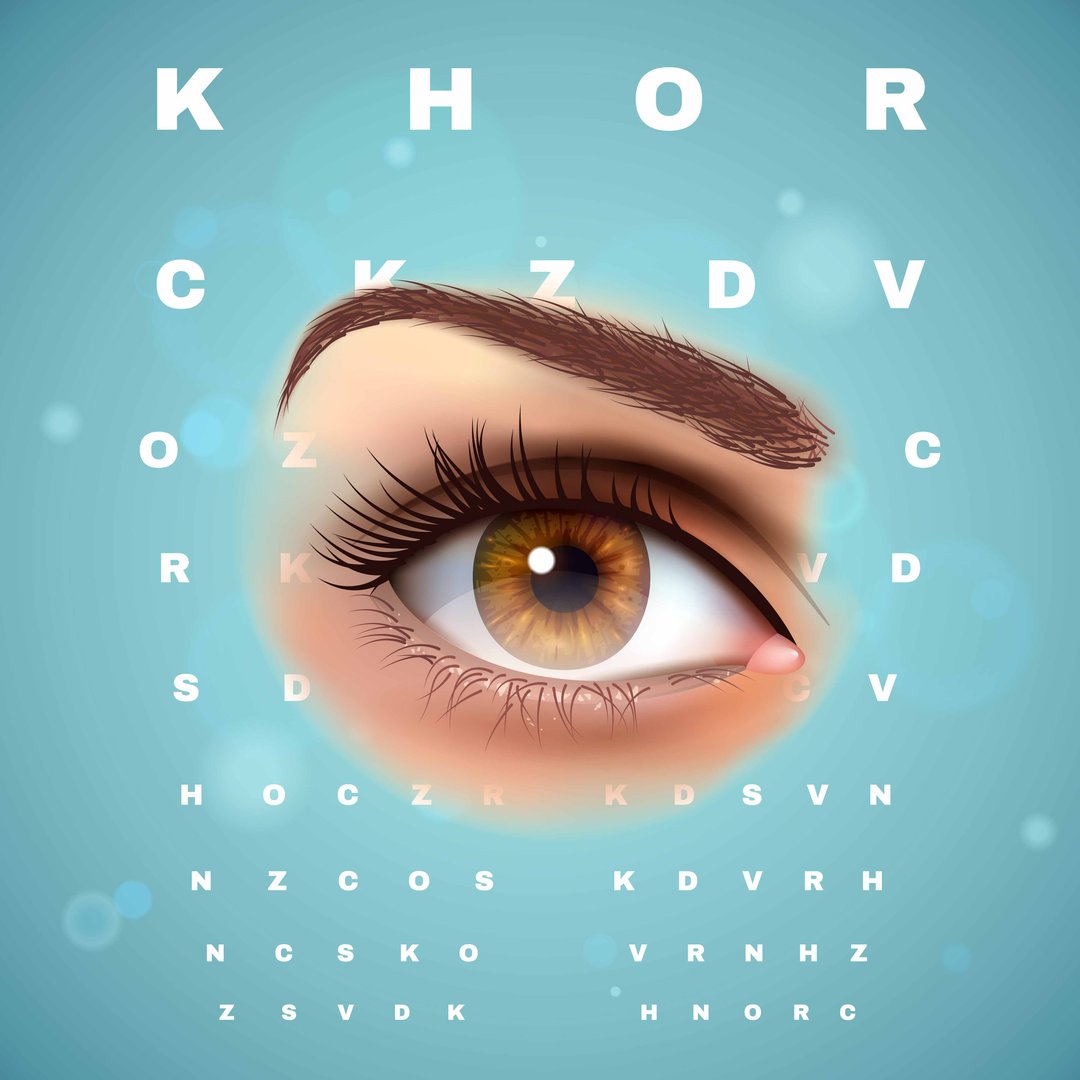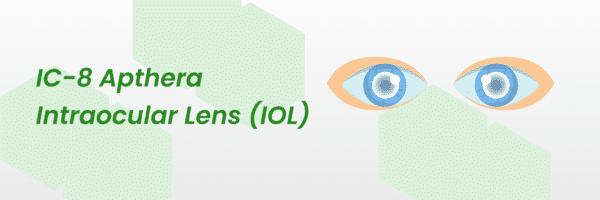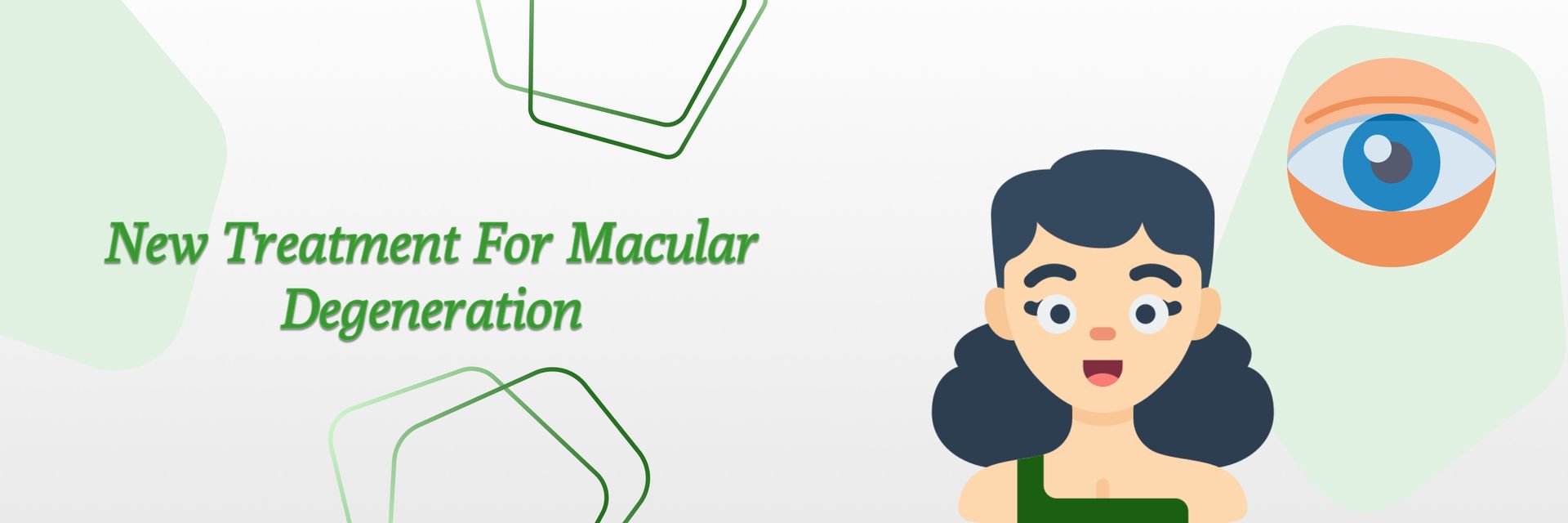What is refractive surgery for myopia?
A medical technique called refractive surgery for myopia, also referred to as "laser eye surgery" or "vision correction surgery," is meant to treat nearsightedness (myopia). Myopia is a frequent refractive defect in which nearby items are seen more while distant objects appear hazy.
What if you didn't need glasses to see clearly? Discover the magic of myopia correction with refractive surgery!
Refractive surgery involves using a laser or other surgical methods to change the cornea's shape, which is the transparent front part of the eye. To ensure that distant images are focused, the aim is to direct light focus onto the retina at the rear of the eye.
Myopia can be treated with a variety of refractive processes, the most popular of which is LASIK and PRK. In LASIK, a tiny flap is made on the cornea, and it is then moved once the underlying tissue has been laser-reshaped. In contrast, PRK removes a tiny layer of corneal tissue to make the necessary correction.
Refractive surgery has helped millions of individuals improve their eyesight and lessen their reliance on prescription glasses or contact lenses. It is regarded as safe.
Discover the several refractive surgeries for Myopia options, from LASIK to PRK, and select the one that's right for you!
Your health is too important to ignore – schedule your appointment now.
What are the different types of refractive surgery for myopia?
There are various myopia refractive surgery procedures, each with a unique strategy for treating nearsightedness. The most typical varieties are listed below:
LASIK (Laser-Assisted In Situ Keratomileusis):
It is one of the most well-liked and often-used myopia correction procedures. During this surgery, the cornea is thinned out and given a hinged flap using a femtosecond laser or a microkeratome. The excimer laser is then used to change the cornea's curvature. After being adjusted, the flap serves as an organic bandage for the eye and heals without the need for stitches.
PRK (Photorefractive Keratectomy):
The first myopia-specific laser vision repair technique was called PRK (photorefractive keratectomy). The curvature of the cornea is modified with the excimer laser to treat myopia. Contrary to LASIK, no flap is made or adjusted; rather, the epithelium regenerates.
LASEK (Laser-Assisted Subepithelial Keratectomy):
The LASEK procedure is also known as laser-assisted subepithelial keratectomy. It is similar to PRK but involves the making of a smaller, hinged flap of the corneal epithelium that is lifted to expose the underlying cornea for laser treatment. Unlike PRK, the flap is relocated after the procedure to speed up healing.
Epithelial Laser-Assisted In Situ Keratomileusis (Epi-LASIK):
In an epithelial separator procedure known as epi-LASIK, the epithelium is separated into a thin flap before being treated with an excimer laser. After that, the epithelial flap is adjusted, much like in LASIK and LASEK.
Implantable Collamer Lens (ICL) or Phakic Intraocular Lens (IOL) Implantation:
To treat myopia, a collamer lens called an ICL or IOL is implanted between the iris and the natural lens of the eye. Higher myopia levels can enjoy this surgery, which is reversible.
The best course of action for each person should be determined in consultation with an expert eye surgeon.
Discover the world with new vision! Know more about Myopia refractive surgery.
How effective is refractive surgery for myopia?
Myopia can be treated with refractive surgery, which also improves visual acuity. Refractive surgery outcomes can differ depending on the degree of myopia, the type of procedure, the surgeon's experience, and personal healing. It's very effective, giving many patients greater eyesight and decreasing the need for glasses or contacts.
The two most popular procedures for correcting myopia, LASIK and PRK, have undergone large research and have shown outstanding results.
Research has revealed that:
LASIK:
Up to 90% of people who undergo LASIK experience 20/20 vision or better after the treatment, making it a successful procedure. Most people recover very quickly from surgery and report having better eyesight within a few days to a week.
PRK:
PRK has proven to be quite successful in treating myopia. The long-term results are comparable to LASIK, with many patients having unique visual acuity without glasses, despite the visual recovery being slower than LASIK and taking several weeks to months to manifest.
Individual outcomes may differ, and some patients may still need low-prescription glasses for specific activities. particularly if they have higher levels of myopia or undergo age-related changes in their vision (such as presbyopia).
Furthermore, refractive surgery does not protect against vision alterations in the future. Over time, some patients may have regression or changes in their vision, necessitating extra treatments or the need for glasses for specific tasks.
Is myopia corrective surgery a one-way trip to flawless vision forever? Learn right now!
Is refractive surgery for myopia permanent?
Refractive surgery for myopia is regarded as permanent because it modifies the cornea and enhances eyesight. To correct vision issues, procedures like LASIK and PRK reshape the cornea, minimizing or eliminating the need for glasses or contacts.
While the effects might not be lasting for everyone, they can continue for a very long period. Years later, a variety of things could cause some people's vision to shift. It's crucial to be aware of this and to manage your vision with regular checkups. These elements consist of:
Changes brought on by aging:
The lens and cornea of an individual's eyes alter as they get older. Presbyopia is a disorder in which the eye loses its capacity to focus on close objects. It often appears around the age of 40 and may still read glasses or other corrective lenses, even after refractive surgery.
Regression:
There may be a little reversal of the initial correction over time, especially in people with greater degrees of myopia. This implies that the refractive error of the eye can change and a slight degree of nearsightedness may reappear. If this occurs, a second step might be required to polish the outcomes.
Other eye problems:
Glaucoma and cataracts are two other eye problems that might appear later in life and need extra treatments that may impair vision.
Individual Healing Responses:
While the vast majority of patients achieve stable vision, a small number may experience changes in vision during the healing process. This is because every person's eye heals.
It's crucial to remember that the patient's compliance with post-operative care and follow-up consultations with their eye surgeon also affects how stable the outcomes will be in the long run. To track any changes and handle any potential problems that may occur, routine eye exams are essential.
In conclusion, refractive surgery can improve eyesight, but it is not immune to the aging process's effects on the eyes. Refractive surgery, yet continues to be a successful and long-lasting treatment for myopia for the majority of patients, lowering their need for glasses or contact lenses for many years.
Security first! Discover the risks and rewards of myopia surgery!
Take charge of your health with the best treatment. Book your consultation now.
Are there any risks or complications associated with refractive surgery for myopia?
Refractive surgery for myopia entails some risks and likely problems, much like any surgical operation. Despite the fact that these risks are minimal, it is crucial for anyone thinking about having surgery to be aware of them and discuss them with their ophthalmologist. Some of the potential dangers and issues are as follows:
Under correction or Overcorrection:
If the intended degree of vision correction is not accomplished in some situations, residual myopia (under-correction) or overcorrection (blurring of distant objects) may follow.
Regression:
As previously indicated, some patients may undergo a little reversal of the original correction over time, which could result in a partial return of nearsightedness.
Dry Eyes:
Refractive surgery may result in short-term or, in rare circumstances, long-term dryness of the eyes, which can cause discomfort, burning, or blurred vision.
Glare, Halos, and Starbursts:
Particularly when driving at night, some people may suffer visual disturbances like glare, halos, or starbursts around lights.
Vision fluctuations:
These may occur during the healing process before getting to the conclusion.
Infection:
The possibility of getting an infection after refractive surgery exists, albeit.
Corneal Haze:
In some circumstances, particularly after PRK, a brief haze may form on the cornea, reducing vision clarity.
Epithelial Ingrowth:
There is a slight chance that the corneal epithelium may grow under the corneal flap during LASIK or PRK, which could cause visual problems.
Vision Loss:
Although unlikely, vision loss is a serious but unlikely risk of any eye operation.
It's crucial to remember that the vast majority of people receive positive outcomes and increased vision without experiencing serious side effects. Refractive surgery candidates are checked by surgeons to reduce hazards, and improvements in technology and surgical methods have made the process safer than before.
Patients should follow the preoperative and postoperative instructions provided by their surgeon, attend all scheduled follow-up appointments, and express any concerns to their healthcare practitioner as soon as possible to cut the possibility of problems and maximize results.
Although refractive surgery for myopia is generally safe and successful, patients should have a thorough discussion with their eye surgeon, balance the benefits and dangers, and make an educated choice based on their particular situation.
Explore your path to recovery following myopia-refractive surgery!
What is the recovery process like after refractive surgery for myopia?
Refractive surgery for myopia recovery times might change depending on the method used (LASIK, PRK, etc.) and how each patient heals. But, there are some typical expectations that the majority of patients can have during the healing process. It is important to adhere to the precise post-operative instructions provided by your eye surgeon since they may have advice that is specialized to your situation. Here is a general description of what to expect:
Immediate Post-Operative Period:
You will relax in the recovery area following the operation. You might feel a little uncomfortable or like a foreign body, and your eyes might feel a little sensitive or runny. At first, your vision can be foggy or cloudy.
The initial days:
For LASIK patients, eyesight recovery is quick, and you can experience clearer vision within the first 24 hours. Vision recovery is delayed after PRK and other surface-based procedures, and it may take several days to a week before a noticeable improvement is seen.
Use of Eye Drops:
To promote healing and avoid infection, your surgeon will prescribe eye drops. Use them as instructed to speed up the healing process.
Avoid Rubbing Your Eyes:
Rubbing your eyes can prevent the cornea from healing during the healing process.
Avoiding Strenuous Activities:
You should refrain from activities that could strain your eyes for a while, usually a week or two, such as heavy lifting, strenuous exercise, and swimming.
Follow-Up sessions:
Your eye surgeon will schedule follow-up sessions with you to check on your recovery and look for any potential issues.
Driving and Employment:
Depending on the surgery type and your personal recovery process, it may take some time before you may resume driving and returning to employment. Many patients can go back to work in a few days to a week, although vigorous exercise or occupations that could cause eye injury should be avoided for a little while longer.
Visual Stability:
Depending on the operation, it's typical for your vision to settle over a period of many weeks to months following the surgery. You will be informed by your surgeon about what to expect now.
Use of Protective Eyewear:
In some circumstances, your surgeon may tell you to protect your eyes from harsh sunlight while they are healing by wearing protective eyewear (such as sunglasses) outside.
The recovery process might vary from person to person, so it's important to be patient and adhere to your surgeon's recommendations.
Are you in search of substitutes? Look about alternatives to refractive surgery for myopia!
What are the alternative options to refractive surgery for myopia?
There are many ways to treat nearsightedness if you are thinking about an alternative to refractive surgery for myopia or if you are not a good candidate for surgery. Here are a few typical substitutes:
Glasses:
Using prescription eyeglasses to treat myopia is a secure and non-invasive solution. With advances in lens technology, they may now offer crystal-clear vision at all distances while also becoming lighter and more comfortable.
Contact lenses:
Another non-surgical method for correcting myopia is the use of contacts. They are a well-liked option for people looking for an alternative to glasses because they provide greater peripheral vision. Due to dry eyes or other difficulties, some people may find them less comfortable or struggle to use contact lenses.
Orthokeratology (Ortho-K):
Wearing specific gas-permeable contacts overnight is part of the orthokeratology (Ortho-K) method, which is non-surgical. Without the need for glasses or contact lenses, these lenses restructure the cornea to provide clear vision during the day. It's crucial to remember that Ortho-K's benefits are temporary, and regular lens usage is required to keep the vision correction in place.
Phakic intraocular lenses (IOLs):
They are implantable lenses used to treat myopia and are inserted in front of the natural lens of the eye. Phakic IOLs do not remove the natural lens, in contrast to intraocular lenses used in cataract surgery. People with higher degrees of myopia who are not good candidates for LASIK or other refractive procedures choose this alternative.
Multifocal or bifocal glasses:
Contact lenses may be given to people who have both myopia and presbyopia, which is the age-related inability to focus on close objects.
Vision Therapy:
A non-surgical treatment option, vision therapy includes some exercises and activities designed to enhance visual abilities and eye coordination. Although it does not address myopia, it can aid in the management of related vision issues.
Low-dose atropine eye drops:
It has been researched as a potential treatment to stop the development of myopia, particularly in youngsters. Usually, these drops are used in conjunction with other techniques for correcting vision.
To choose the best course of action for your particular situation, you must speak with an eye care specialist. When selecting the best option to meet your visual demands, they will take into account elements like your age, lifestyle, eye health, and the degree of your myopia.
If you're not satisfied, can myopia corrective surgery be undone? Let's investigate!
Can refractive surgery for myopia be reversed if you are not satisfied with the results?
Myopia correction surgery, such as LASIK or PRK, is seen as permanent since the cornea is altered. It is impossible to undo the surgical treatment and restore the eye to its pre-surgery condition after the cornea has been altered.
It is important to speak with your eye surgeon right away if you are unhappy with the outcomes of your refractive procedure. In certain cases, consideration may be given to augmentation or revision procedures to enhance outcomes if the expected vision correction falls short or if complications arise.
Before having refractive surgery, it's crucial to set reasonable expectations and have a detailed conversation about the risks, advantages, and potential outcomes with your ophthalmologist.
Make sure you comprehend the operation, the potential risks and advantages, and the surgical limits before undergoing any refractive surgery. This will guarantee that you are a good candidate for the treatment and help you make an informed decision.
Your well-being is our priority - call us to book your appointment today.
References:







